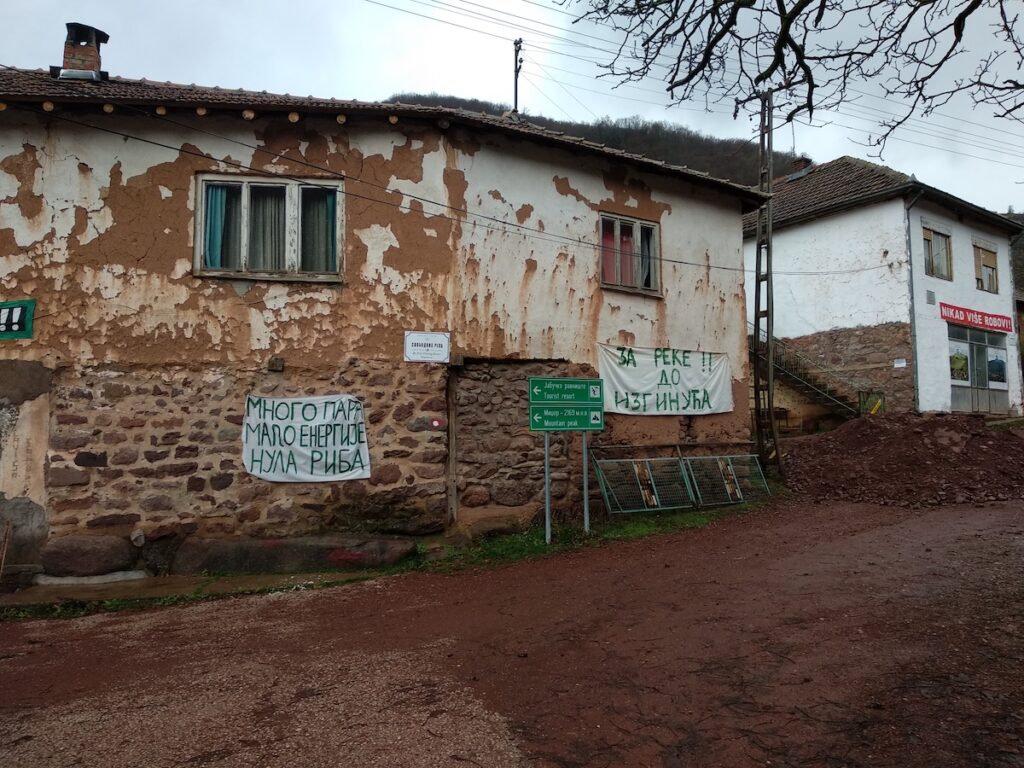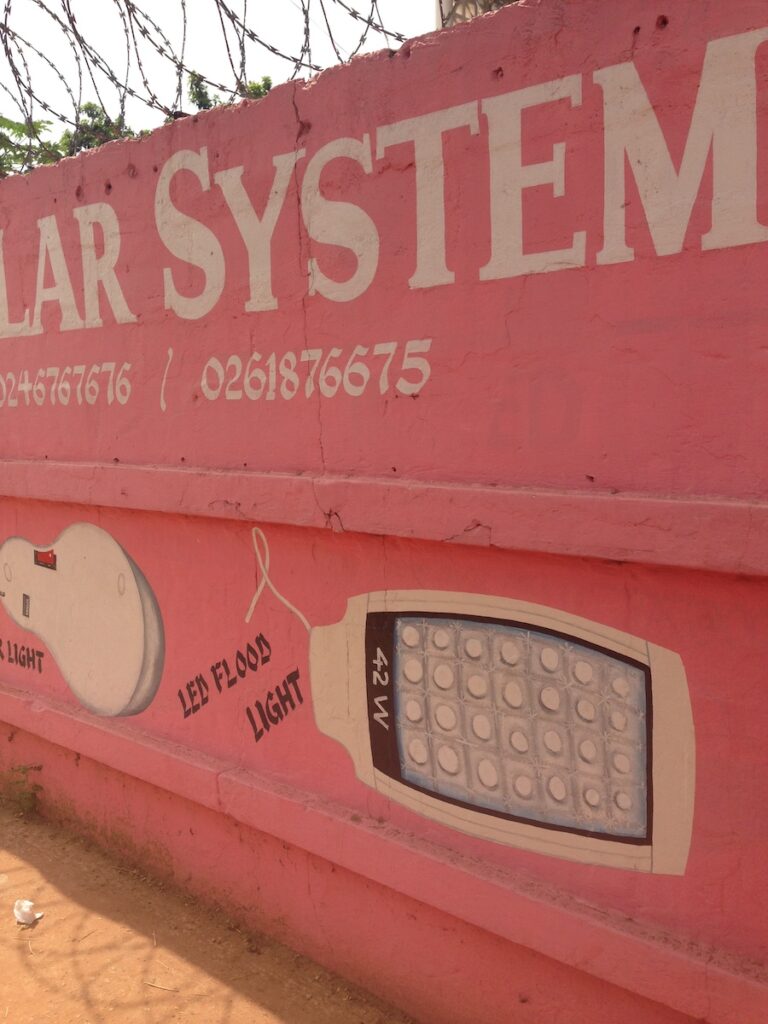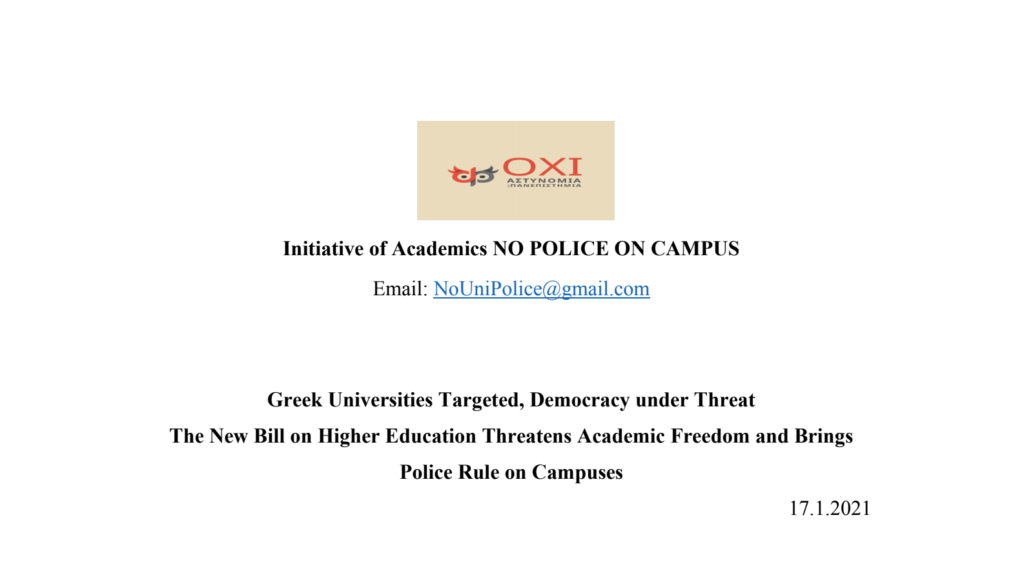For the first time since El Salvador’s mid-20th century military dictatorship, a single political party dominates both the legislative and executive branches of the government, and by all accounts aims to control the judiciary soon as well. The Nuevas Ideas or “New Ideas” party, the political vehicle of populist president Nayib Bukele, recently used its new supermajority in the Salvadoran Legislative Assembly to unconstitutionally expel five supreme court judges. It will soon replace them with new appointees, presumably picked by Bukele, in a move that social movement activists are denouncing as a “technical coup.”
Unlike the military dictatorships that dominated El Salvador up until its bloody civil war, however, Bukele’s government is nominally democratic. Bukele was elected president in 2018 and will serve a five-year term, after which he is supposed to leave office for good. Legislative and municipal elections in El Salvador delivered his party, branded distinctively with a bold “N” the stands for both “Nuevas Ideas” and “Nayib”, a resounding majority.
The elections marginalized both the centre-left FMLN, former communist guerrillas, and the traditional right ARENA, anti-communists organized by former military junta members. Bukele claimed to have “turned the page” on the postwar two-party system that characterized El Salvador’s political reality following the 1992 Peace Accords. Bukele has repeatedly claimed that he is “neither left nor right” and described both sides of the country’s bloody civil war as equally criminal, despite evidence to the contrary.
Yet in spite of a nominal democratic mandate (problematized by mass abstentionism in recent Salvadoran elections) and a post-ideological veneer, Bukele has much in common with other right-wing authoritarians in the region, such as Jair Bolsanaro – whose son and advisor tweeted supportively of the sacking of the supreme court. The instrumentalization of legislative proceedings to consolidate power also bears similarity to the tactic of lawfare used in Brazil and elsewhere by the Latin American far right. Bukele’s tendency to both issue government decrees and launch harassment campaigns against his perceived enemies via twitter has also prompted comparisons to Donald Trump.
Bukele has political power, and all signs suggest that the repressive elements of the state stand behind him – in some cases, literally, as when he stormed the legislature last year, attempting to force the assembly to approve his Territorial Control Plan and secretive US$109 million loan to upgrade the country’s police armaments. Yet in the name of security and order, he needs to consolidate more.
Speaking in the aftermath of the move to overturn the judiciary, a participant told me, “This is a strategy that could be regionalized.” The move is consistent with the strategy of “autogolpe” or “self-coup” used by other civilian governments with close military ties to kneecap and paralyze opposition, often in the name of rooting out designated enemies. Turkish president and fellow right-wing populist Recep Tayyip Erdogan may have attempted a similar strategy in 2016, and if Eduardo Bolsanaro’s comments are any indication, there is potentially appetite for it in Brazil.
Bonapartism, Bukeleism
Bukele’s personalist leadership, claims to be post-ideological, and appeals to an abstract Salvadoran people, all reflect what Italian communist Antonio Gramsci called “caesarism,” or what Marx, in The Eighteenth Brumaire, called Bonapartism. Like these historical regimes, Bukele’s rise was precipitated by a crisis. El Salvador is a microcosm of the global economic, ecological, health, political and social crises that have prompted a meteoric rise of right-wing populism around the world.
Gramsci called these conditions, which can precipitate reaction or revolution, organic crises. Organic crises usually lead to a rejection of established political parties, economic policies, and value systems. Such crises are transnational in their origins but also intimately local. El Salvador’s domestic crisis reflects global and regional trends of collapsing party systems, increased securitization, and growing disaffection with globalization and accumulation-by-dispossession. Using the framework of an organic crisis, my research situates the rise of right-wing populism in Central America within the global rise of populism.
For populism experts in the liberal tradition, like Cas Mudde and Cristobal Kaltwasser, populism signals a degeneration of the health of liberal democracy and liberal institutions. Populism’s emphasis on majoritarianism leaves little room for liberal pluralism and reduces politics to a Schmittian dichotomy of “friends” and “enemies.” On the other hand, following Ernesto Laclau and Chantal Mouffe, some on the Left see the rise of populism as a positive, calling for socialists to seize the “populist moment” to rally “the people” to a left-populism.
Both these perspectives focus on the ideological anatomy of populism, tracing its political reasoning and descriptive effects. This is insufficient to explain Bukele. On the one hand, if we rely on liberal accounts of populism, we end up reproducing simplistic narratives of democratic backslide and the Latin caudillo. On the other hand, Laclau and Mouffe’s discursive analysis fails to make a link between the “superstructural” language of nation, sovereignty, order, and belonging that we find in right-wing populism, and the world of production, finance, and recessions.
El Salvador’s organic crisis
Bukele and his party, Nuevas Ideas, emerged out of the 2011 indignados protests, named after the Spanish mobilizations of the same name. While initially buoying the left, middle-class Salvadoran indignadosquickly became disillusioned by the FMLN. Bukele, an ex-FMLNista himself, in many ways capitalizes on the unfulfilled anti-corruption demands of the indignados. His response in office to this crisis, though punitive, also reflects this popular disillusionment with the postwar Salvadoran political system.
Out-migration has for the past three decades acted as a kind of release valve for social pressures in Central America, pushing peasants and workers dispossessed by capitalist development north towards the United States and buoying Central American economies with billions in remittances. But as William Robinson points out, mounting ecological, social, and economic dispossession, combined with slumping economic growth and rising foreign debt (even before the COVID-19 pandemic, which has only made the slump worse), and a labour market unable to absorb the remaining dispossessed population, have pushed the region towards implosion.
Organic crises lay bare fundamental contradictions in the system that the ruling classes are unable to resolve, provoking resorts to open force. Central American countries, aided by the United States through the Alliance for Prosperity and Regional Security Initiative, have responded to simmering unrest and growing social movements with escalating violence and repression. Military and police aid nominally supports anti-gang efforts and the regularization of immigration—favourite talking points of Bukele.
While in neighbouring Guatemala this stewing crisis, exacerbated by the COVID-19 pandemic, has escalated into anti-systemic protests, Bukele has kept a lid on the pot through a mix of emergency welfare provisions and increasing militarization. Bukele’s mixing of highly-publicized social supports and punitive populism is again a consistent Bonapartist strategy of weathering the interregnum by attempting to simultaneously reconcile and repress social conflict.

Crisis, protection, and sovereignty
Even as they are assailed by COVID-19 deaths, right-wing populists in Latin America are rebounding, signaling a potential future for right-wing populism in the ‘post-COVID’ world. Sociologist Paolo Gerbaudo recently argued that post-COVID politics will be defined by the theme of ‘protection’ – from epidemics, from climate change, from crime and instability. Don Kalb has argued on this blog that current protection measures are facilitating the formation of a new ‘techno-capital’ post-COVID regime of accumulation with new kinds of contestations.
Bukele’s El Salvador foreshadows a possible post-COVID political environment dominated by right-wing populism. Like his preceding controversial actions, Bukele’s autogolpe is being justified with a mix of militaristic and pseudo-religious language—demonizing his enemies and framing the fight against corruption and organized crime in terms of literal warfare to secure the sovereignty of the country.
Throughout the Global South, pandemic measures that prioritize repression over healthcare and bolster existing over-policing have led to the peripheralization of neighbourhoods and the stripping of meaningful citizenship from villainized populations. In the context of widespread dispossession in El Salvador, the state’s longstanding mano duro approach to crime, and now Bukele’s autogolpe, these measures signal an even more repressive kind of capital accumulation coming out of the COVID crisis.
Bukele also benefits from a demoralized left that has strained relationships with its base and social movements. El Salvador is thus also a cautionary tale when it comes to simplistic calls for a left alternative – be it to reclaim populism or reclaim the politics of protection. The marginalization of the leftist FMLN is not for lack of trying to appropriate populist or protectionist language – the outgoing FMLN government of Salvador Sanchez Ceren also attempted to combine punitive anti-crime legislation with progressive social programs, as well as symbolic gestures like refusing to take up residence in the presidential palace, converting it into a public venue.
The late Ralph Sprenkels and Hillary Goodfriend have both pointed out that the FMLN’s collapse was not due to being inadequately populist, but rather due to frayed internal organization, clientelism and corruption, and a strategy in power that prioritized pragmatism over a transformational program. Enthusiasm for left-populism or left-protectionism should thus be tempered by a serious diagnosis of the organizations, from grassroots to party leaderships, that are supposed to carry a left alternative to power.
Social struggles persist outside the FMLN, however. Bukele’s hostile attacks on public sector employees have prompted strikes, and at the time of writing, protests against the autogolpe, hunger movements and other mobilizations are beginning to make cracks in what Bukele insists is his popular mandate. Whether Bukele’s right-wing populism will totter like it has in neighbouring Guatemala or whether his autogolpe will consolidate a new authoritarian state remains an open question, one worthy of attention for anthropologists interested in the new contours and contestations of the present moment.
Abram Lutes is a graduate researcher at the Carleton University Institute of Political Economy in Ottawa, Canada. His research interests include Gramscian theory, world-systems theory, social movements, and populism. At the time of writing, he is conducting digital fieldwork on El Salvador and Guatemala.
Bibliography
AFP. n.d. “El Salvador Lawmakers Sack Top Prosecutor, Supreme Court Judges” Deutsche Welle. Accessed May 25, 2021. https://www.dw.com/en/el-salvador-lawmakers-sack-top-prosecutor-supreme-court-judges/a-57406228.
Alfonsi, Sharyn. 15 December 2019. “‘Our Whole Economy Is in Shatters’: El Salvador’s President Nayib Bukele on the Problems Facing His Country.” n.d. Accessed May 25, 2021. https://www.cbsnews.com/news/el-salvador-president-nayib-bukele-the-60-minutes-interview-2019-12-15/.
Antonini, Francesca. 2020. The Concepts of Bonapartism and Caesarism from Marx to Gramsci. Caesarism and Bonapartism in Gramsci. Brill. https://doi.org/10.1163/9789004441828_002.
Arevalo, Amaral; Wenham, Clare. 13 April 2020. “Covid-19 in El Salvador: Safeguarding Public Health or Restricting Human Rights?” LSE Latin America and Caribbean Blog (blog) https://blogs.lse.ac.uk/latamcaribbean/2020/04/13/covid-19-in-el-salvador-safeguarding-public-health-or-restricting-human-rights/.
Batz, Giovanni. n.d. “Alliance for Prosperity?” CulAnth: Society for Cultural Anthropology. Accessed May 17, 2021. https://culanth.org/fieldsights/alliance-for-prosperity.
Brigida, Anna-Cat. n.d. “El Salvador Constitutional Crisis Ushers in ‘Period of Darkness.’” Al Jazeera. Accessed May 25, 2021. https://www.aljazeera.com/news/2021/5/4/el-salvador-constitutional-crisis-ushers-in-period-of-darkness.
Bell, David A. 2020. “Fascism or Caesarism?” Public Seminar. August 27, 2020. https://publicseminar.org/essays/fascism-or-caesarism/.
Cameron, Maxwell A. 1998. “Self-Coups: Peru, Guatemala, and Russia.” Journal of Democracy 9 (1): 125–39. https://doi.org/10.1353/jod.1998.0003.
Caribe, Comisión Económica para América Latina y el. 2018. Centroamérica y la República Dominicana: evolución económica en 2017 y perspectivas para 2018. Balance preliminar. CEPAL. https://www.cepal.org/es/publicaciones/43254-centroamerica-la-republica-dominicana-evolucion-economica-2017-perspectivas-2018.
Copeland, Nicholas. 16 December 2020. “In Guatemala, Resignations Are Not Enough.” NACLA. Accessed May 25, 2021. https://nacla.org/news/2020/12/16/guatemala-resignations-are-not-enough.
Cuellar, Jorge E. 2 March 2020. “Nayib Bukele and the Punitive Option in El Salvador.” 2020. The Abusable Past (blog). https://www.radicalhistoryreview.org/abusablepast/nayib-bukele-and-the-punitive-option-in-el-salvador/.
Cuellar, Jorge E. 5 June 2020. “On Waving the White Flag.” Social Text. Accessed May 25, 2021. https://socialtextjournal.org/periscope_article/on-waving-the-white-flag/.
El Faro. 2020. Exigencias Feministas Contra Bukele y Sus Militares. https://www.youtube.com/watch?v=-R9zbUAEmIE.
Gerbaudo, Paolo. 22 April 2021. “Why the Battle between Left and Right Protectionism Will Shape the Post-Covid World.” n.d. Accessed May 14, 2021. https://www.newstatesman.com/international/2021/04/why-battle-between-left-and-right-protectionism-will-shape-post-covid-world.
Gies, Heather. 2 November 2018. “Once Lush, El Salvador Is Dangerously Close to Running out of Water.” National Geographic. Accessed May 25, 2021. https://www.nationalgeographic.com/environment/article/el-salvador-water-crisis-drought-climate-change.
Goodfriend, Hillary. 2019. “El Salvador’s Backslide.” Jacobin. Accessed May 25, 2021. https://jacobinmag.com/2019/02/el-salvador-fmln-nayib-bukele.
Gusterson, Hugh. 2017. “From Brexit to Trump: Anthropology and the Rise of Nationalist Populism.” American Ethnologist 44 (2): 209–14. https://doi.org/10.1111/amet.12469.
InSight Crime. 21 June 2019. “El Salvador Flirts with ‘Mano Dura’ Security Policies Again.” 2019. InSight Crime (blog). https://insightcrime.org/news/analysis/el-salvador-flirts-with-mano-dura-security-policies-again/.
InSight Crime. 18 October 2011. “Central America Regional Security Initiative (CARSI).” 2011. InSight Crime (blog). https://insightcrime.org/uncategorized/central-america-regional-security-initiative/.
Kalb, Don. 1 June 2020. “Covid, Crisis, and the Coming Contestations.” n.d. Accessed May 14, 2021. http://www.focaalblog.com/2020/06/01/don-kalb-covid-crisis-and-the-coming-contestations/.
Kitroeff, Natalie. 2020. “Young Leader Vowed Change in El Salvador but Wields Same Heavy Hand.” The New York Times, May 5, 2020, sec. World. https://www.nytimes.com/2020/05/05/world/americas/el-salvador-nayib-bukele.html.
Laclau, Ernesto. 2005. On Populist Reason. London ; New York: Verso.
Lagarde, Mylene; Masferrer, Manuel S.; Herl, Carlos. 16 October 2020. “El Salvador’s COVID-19 Response Is Storing up Health and Economic Problems for the Worse-off.” LSE Latin America and Caribbean Blog (blog). 2020. https://blogs.lse.ac.uk/latamcaribbean/2020/10/16/el-salvadors-covid-19-response-is-storing-up-health-and-economic-problems-for-the-worse-off/.
Levenson, Z. 2020. “An Organic Crisis Is Upon Us.” Spectre Journal. Accessed March 26, 2021, from: (https://spectrejournal.com/an-organic-crisis-is-upon-us/)
Marx, Karl. 1937. 18th Brumaire of Louis Bonaparte. 1852. Moscow, USSR: Progress Publishers. Accessed May 17, 2021. https://www.marxists.org/archive/marx/works/1852/18th-brumaire/ch01.htm.
Mowforth, Martin, 28 December 2014. “Global Pressures on Central America.” 2014. The Violence of Development (blog). https://theviolenceofdevelopment.com/global-pressures-on-central-america/.
Mudde, Cas, and Cristobal Rovira Kaltwasser. 2017. Populism: A Very Short Introduction. Oxford University Press.
Orozco, Manuel. 2018. “Las Remesas a América Latina y el Caribe en 2017” El Dialogo. Washington, DC: Inter-American Dialogue. https://www.thedialogue.org/wp-content/uploads/2018/02/Remesas-a-ALC-2017.pdf
Orozco, Manuel. 2018. Central American Migration: Current Changes and Development Implications. Washington, DC: Inter-American Dialogue.
Redacción Nacionales. 1 May 2021. “Se consuma el golpe de Estado a la Sala de lo Constitucional.” 2021. Diario Co Latino (blog). May 2, 2021. https://www.diariocolatino.com/se-consuma-el-golpe-de-estado-a-la-sala-de-lo-constitucional/.
Reuters. 3 February 2019. “Nayib Bukele gana presidencia de El Salvador y pone fin a 30 años de bipartidismo.” El Financiero. Accessed May 25, 2021. https://www.elfinanciero.com.mx/mundo/nayib-bukele-gana-presidencia-de-el-salvador-y-pone-fin-a-30-anos-de-bipartidismo/.
Rey-Araujo, Pedro. 2019. “Grounding Populism upon Political Economy: Organic Crises in Social Structures of Accumulation Theory.” Science & Society 83 (January): 10–36. https://doi.org/10.1521/siso.2019.83.1.10.
Robinson, William. 28 January 2019.“The Second Implosion of Central America.” NACLA. Accessed May 17, 2021. https://nacla.org/news/2019/01/28/second-implosion-central-america.
Rodrik, Dani. 2018. “Populism and the Economics of Globalization.” Journal of International Business Policy 1 (1–2): 12–33. https://doi.org/10.1057/s42214-018-0001-4.
Shadi, Hamid. 2018. “Left Populism and the Rediscovery of Agonistic Politics.” American Affairs Journal 2 (4): 187–201. https://americanaffairsjournal.org/2018/11/left-populism-and-the-rediscovery-of-agonistic-politics/
Stott, Michael. 2020. “Pandemic Politics: The Rebound of Latin America’s Populists.” Financial Times, September 23, 2020. https://www.ft.com/content/3c24bf86-2c47-4939-9477-cefd655d4d48.
Sprenkels, Ralph. 2019. “The FMLN’s Electoral Implosion in El Salvador: A Fiasco Foretold?” PoLAR: Political and Legal Anthropology Review (blog). April 15, 2019. https://polarjournal.org/2019/04/15/the-fmlns-electoral-implosion-in-el-salvador-a-fiasco-foretold/.
Torres, Eder. 14 September 2019. “Salvadoran Unions Confront Right-Wing Populist Government.” People’s Voice. Accessed May 25, 2021. http://peoplesvoice.ca/2019/09/14/salvadoran-unions-confront-right-wing-populist-government/.
Torrez, Clara Guardado, and Ellen Moodie. 2020. “La Línea, Los Indignados, and the Post-Postwar Generation in El Salvador.” The Journal of Latin American and Caribbean Anthropology 25 (4): 590–609. https://doi.org/10.1111/jlca.12498.
Willis, Graham D.; Davis, Diane E. 2021. “Urban Sovereignty in the Age of Pandemics: Illicit Actors and the Crisis of Governance.” PoLAR: Political and Legal Anthropology Review (blog). February 10, 2021. https://polarjournal.org/2021/02/10/urban-sovereignty-in-the-age-of-pandemics-illicit-actors-and-the-crisis-of-governance/.
Vinx, Lars. 2019. “Carl Schmitt.” In The Stanford Encyclopedia of Philosophy, edited by Edward N. Zalta, Fall 2019. Metaphysics Research Lab, Stanford University. https://plato.stanford.edu/archives/fall2019/entries/schmitt/.
Cite as: Lutes, Abram. 2021. “Anatomy of an Autogolpe: On the consolidation of Nayib Bukele’s power in El Salvador.” FocaalBlog, 26 May. https://www.focaalblog.com/2021/05/26/abram-lutes-anatomy-of-an-autogolpe-on-the-consolidation-of-nayib-bukeles-power-in-el-salvador/




















